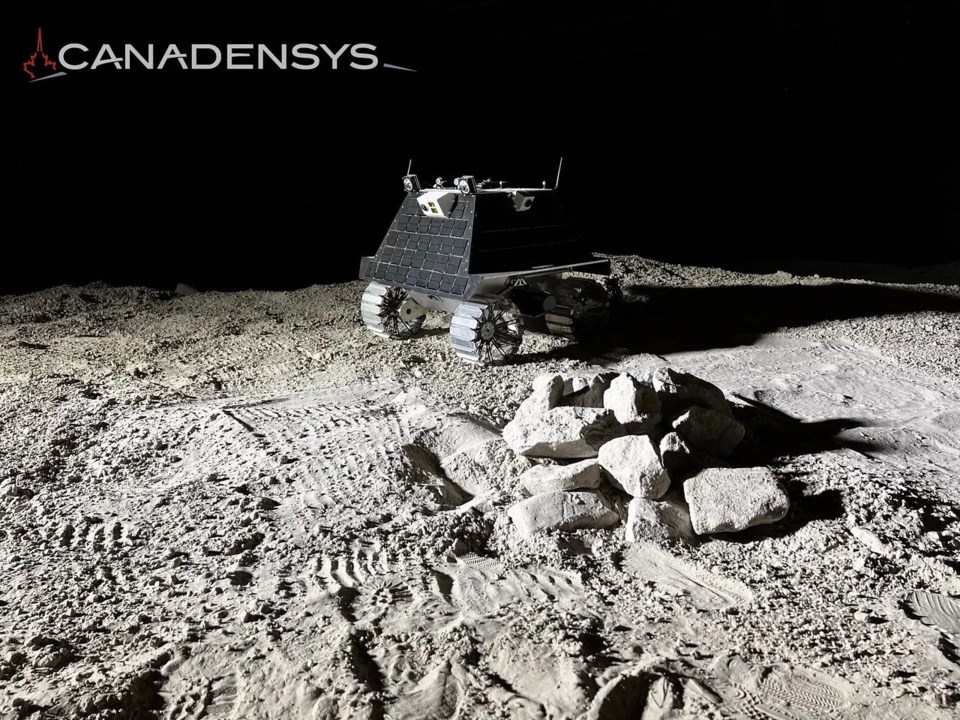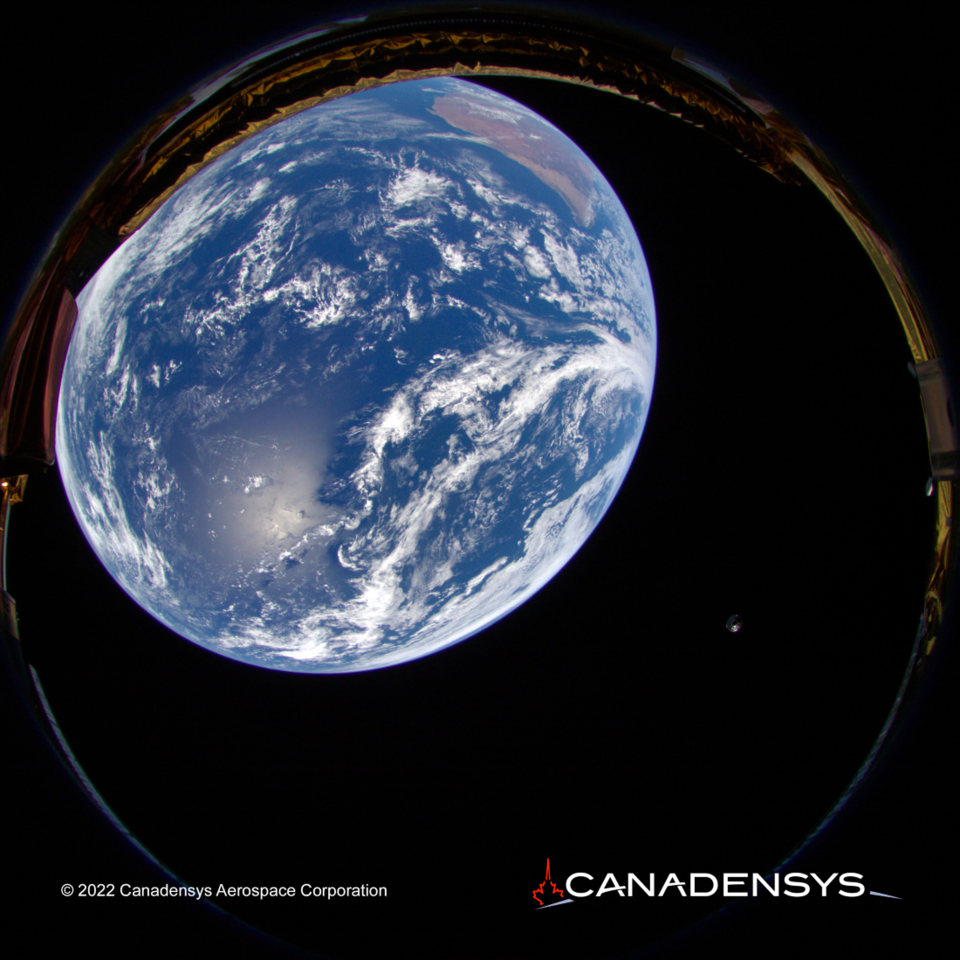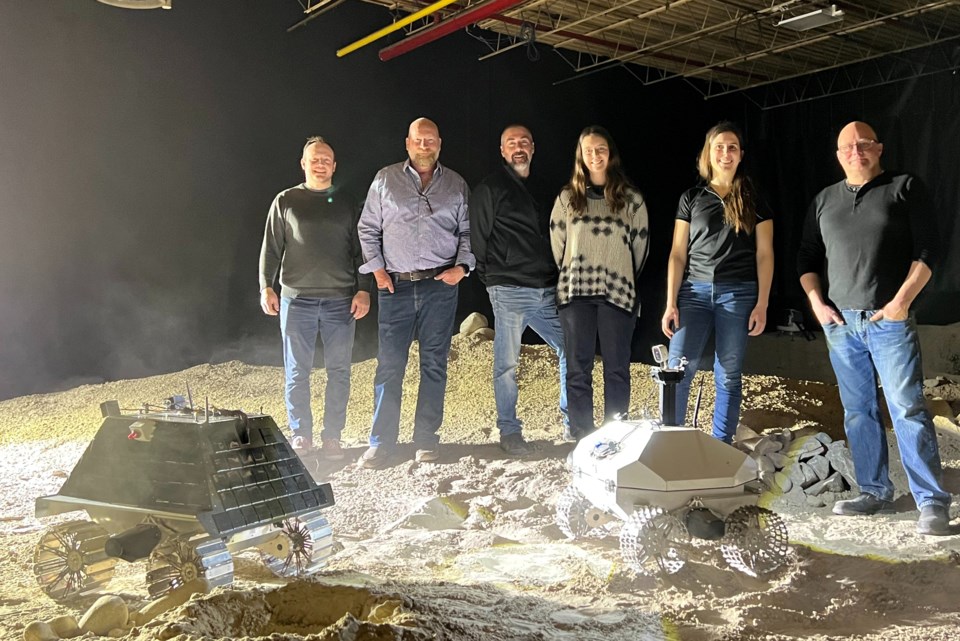In the unassuming heart of Stratford, in between an oil change shop and a grocery store, a Canadian milestone is taking shape.
Canada’s first lunar rover is being designed and built by Canadensys Aerospace – specifically at the Stratford prototyping facility located at the former Samsonite Canada site on Ontario Street.
Peter Visscher, general manager of the facility, introduced StratfordToday to a prototype of the lunar rover, affectionately known as SCAMP.
Standing for Small Canadian All-terrain Mobility Platform – the ‘t’ is small – SCAMP is being designed for a lunar mission planned for 2026.
Initiated under the Canadian Space Agency (CSA)’s Lunar Exploration Accelerator Program, the mission’s objectives are in geology, shadowed regions and volatiles, astronaut health, and life sciences.
One of the key aspects of the mission is finding water, which has recently been discovered to exist on the moon – most likely in the lunar poles.
What form that water takes is the question that will take a few years and a lot of work to find out.

The 30 kg lunar rover will be sent to the Moon’s south pole with multiple payloads from Canada and the United States and is the culmination of a decade’s-worth of rover development.
Visscher says that a team of about twenty people will remotely operate the rover, consisting of navigators, engineers, scientists, and representatives from Canadensys. When that day comes, it will be equal parts exciting and stressful.
“If I had hair I’d be ripping it out,” Visscher said with a laugh.
Christian Sallaberger, president and CEO of Canadensys, said there are key challenges facing the design.
The Moon has drastic temperature fluctuations, from 200 degrees below Celsius to 100 degrees Celsius. The rover needs to be built to withstand that wide temperature swing multiple times. The mission is designed to survive for many months.
Additionally, the Moon is not protected by the Van Allen belt, which protects Earth from radiation coming from the sun. The rover will have to withstand radiation hazards, poseing a specific threat to the electronics and onboard computers.
The regolith, the dirt-like material on the moon that is perhaps most comparable to tiny shards of glass, is another challenge. Without weather to wear down the soil, on a microscopic level the particles are jagged.
“It’s like velcro dust,” Sallaberger said. “It sticks to everything and gums up mechanisms. It makes it very tricky to design moving parts so that they continue to operate successfully.”
The distance between the Earth and the Moon is another complication. Even communicating at the speed of light, there will be several seconds of time delay.
Visscher said that the balance between strength and weight is a huge challenge as well and is a key design problem. The rover will have to be strong enough to withstand the harsh environment of the Moon and light enough to be able to maneuver.
Even with those monumental challenges, Sallaberger and the team are confident that they will solve them and produce a successful mission.
How we got here …
The project was awarded to Canadensys after extensive work and preparation. As Sallaberger explained, although it was a competitive challenge, their team was instrumental in the creation of the mission.
“We have been actively developing lunar rover technologies for about 10 years,” Sallaberger said. “During that time we have been closely aligned with the Canadian government and the Canadian Space Agency…This lunar rover mission is the culmination of some development and study work we did for the Canadian government.”
Competition for the contract was tough, with many other aerospace companies throwing their hat in the ring. The initial phase of the contract, preliminary flight planning, was given to two companies: Canadensys and MDA, another space agency in Canada. Both developed and presented flight plans and the full contract was eventually awarded to Canadensys in November, with an announced $43 million contract.
“We were celebrating,” Sallaberger reminisced. “It’s a big deal … as Canadians, being able to develop and fly Canada’s first lunar rover, we’re immensely proud of that.”
After it's all said and done, Sallaberger estimates the project will cost nearly $50 million.
A lot of cake to go around
Sallaberger says that Canada’s first lunar rover, although an important milestone, is icing on the cake – but there are plenty of slices to go around.
Canadensys has been designing and creating aerospace technology for a decade. While the Stratford facility focuses on vehicle development, the company works on other projects and other hardware.
Most recently, Canadensys is involved in a Japanese lunar mission, providing an AI-enabled, multi-camera vision system. That mission consists of a Japanese spacecraft integrated in Germany and launched by SpaceX in Florida. It has a vision system made in Canada and hardware from the United Arab Emirates.
Sallaberger iterated that the lunar rover will be a proud moment for Canadians, but space exploration is an international endeavour, as it should be. With every mission, there are international partners, collaborators, scientists, and stakeholders, he said.
What is crucial for Canadians is what this mission means for their future.
“This exploration of the Moon...it lets Canada play a very critical role in that international effort. In some ways, it gives us a seat at the table for the even bigger things that will follow.”

The Stratford facility started around five years ago, and has been in the current location for a little over three years.
Visscher said that the reason why Stratford is the location for Canadensys’ vehicle production is simple: everything is here.
Aside from Stratford’s charm and its affordability, supplies and materials are readily available – in some cases being manufactured around the corner.
The most important part of the success of operating local, Visscher says, is the right people are here.



